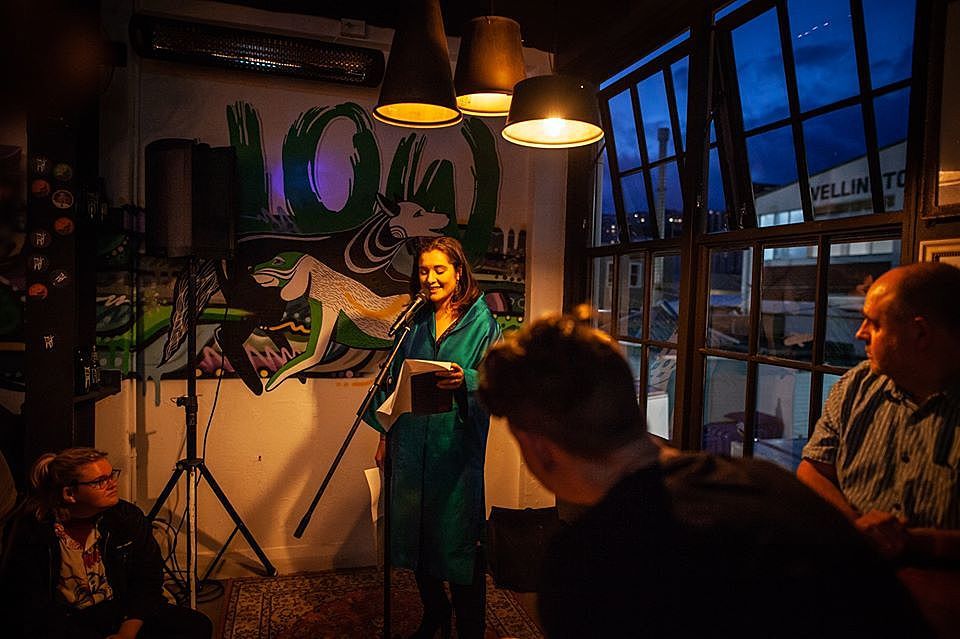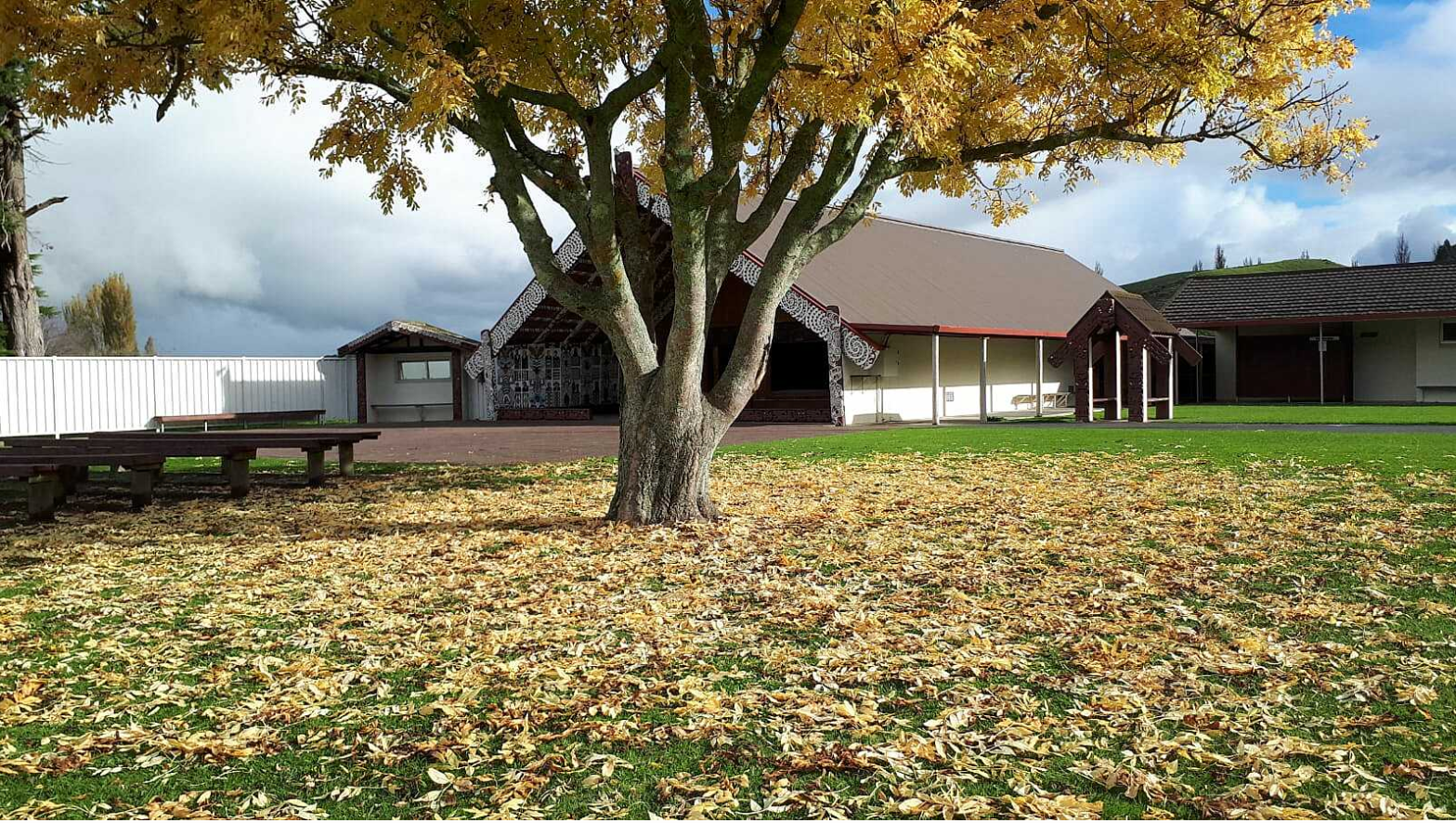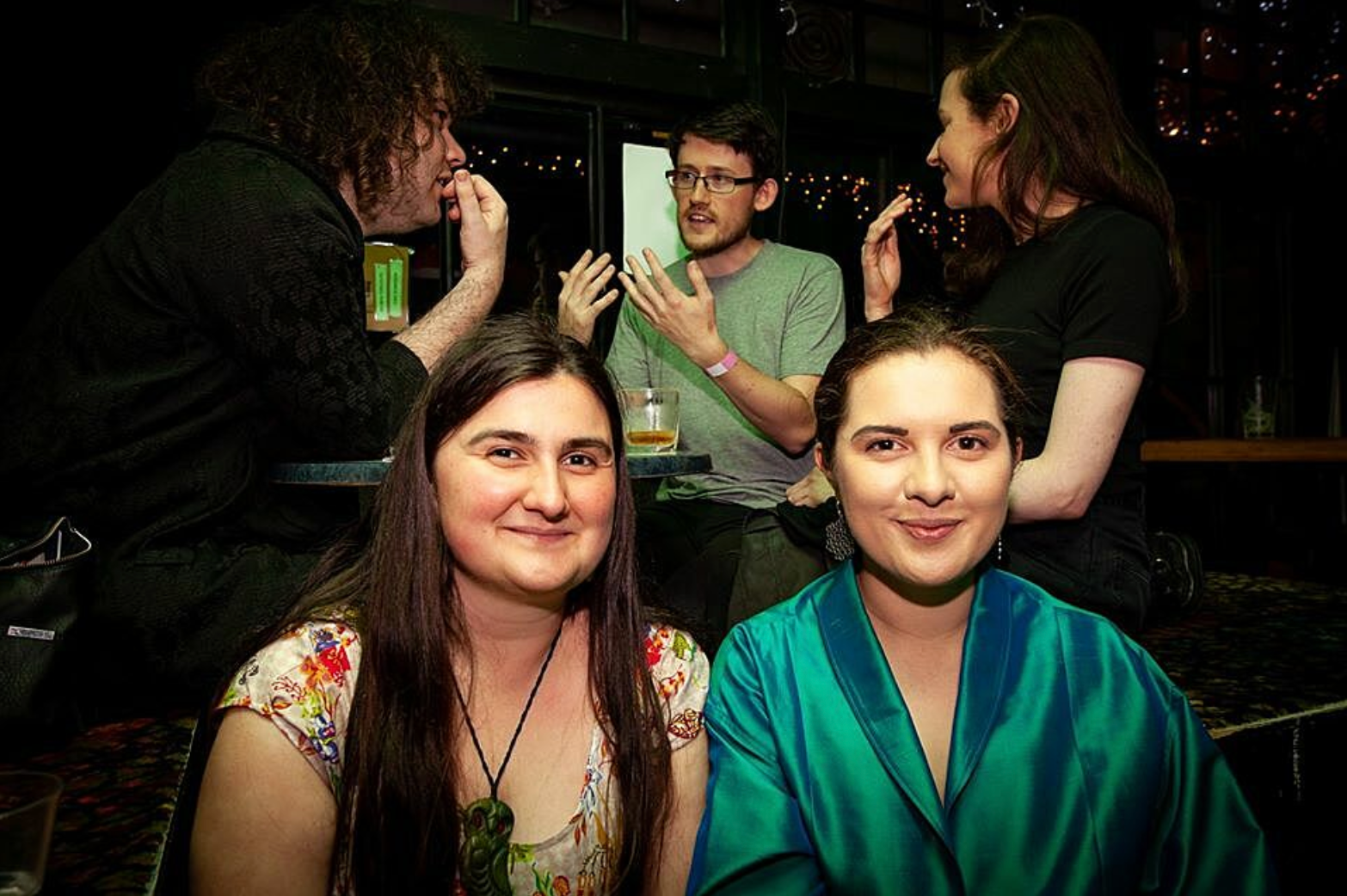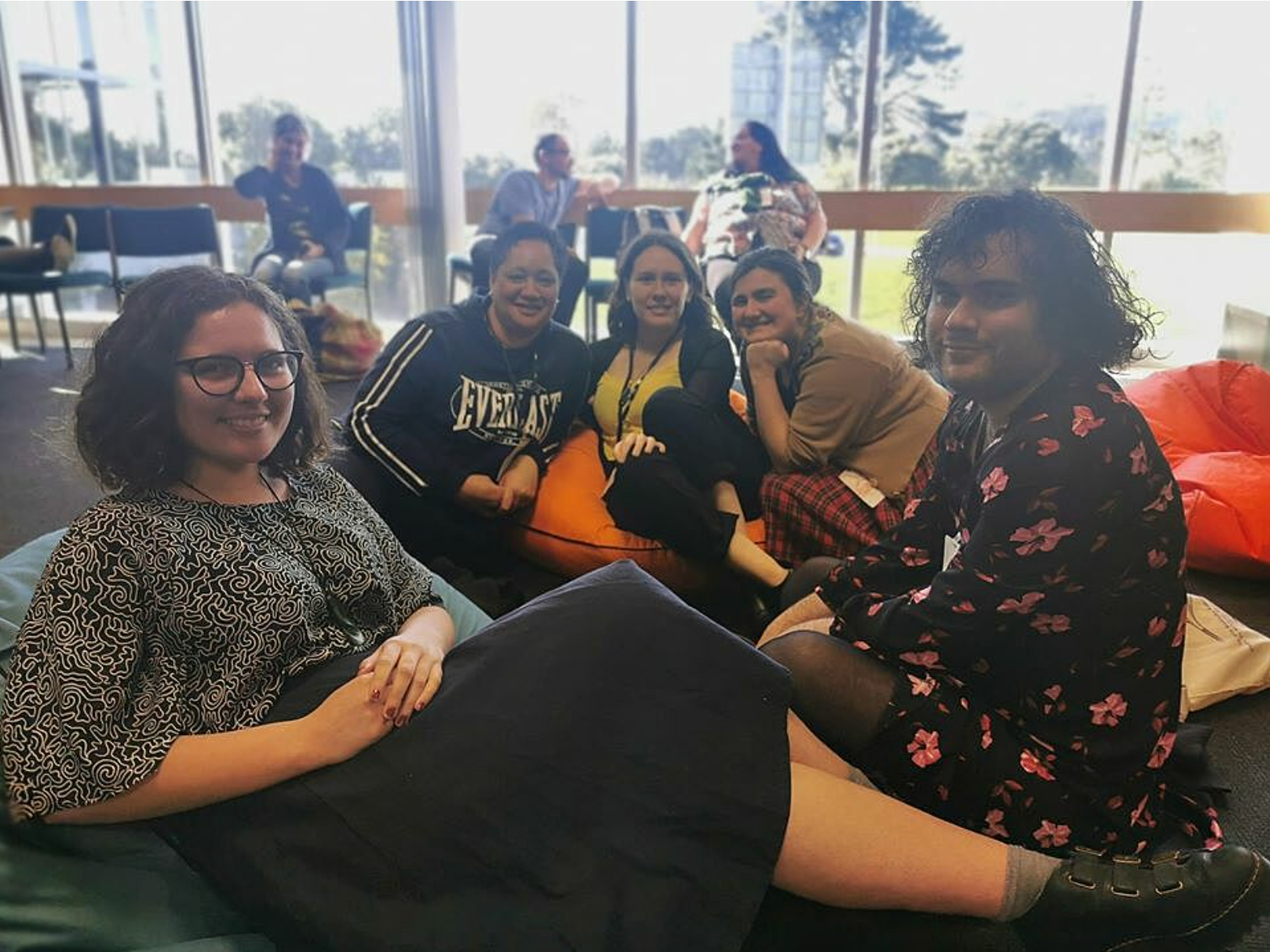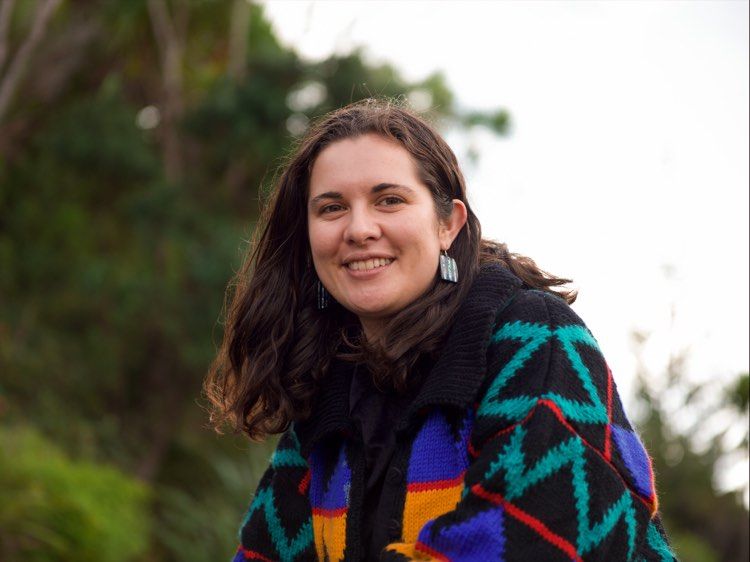Ake! Ake! Ake! On the Innovation and Expansion of Toi Māori
We write best when we know ourselves. Sinead Overbye on writing as a queer Māori woman and the whakapapa of innovation in Toi Māori.
Sinead Overbye reflects on how her perspective as a queer Māori woman influences her writing practice. She traces an artistic whakapapa by bringing to light a history of innovation and experimentation in Māori art.
Culture is a silent plant. It creeps in without warning. During my MA, I wrote a collection of short stories I vaguely termed ‘magical realism’ because my classmates called them ‘strange, disturbing and fairytale-esque’, but also because I refused the idea that they were entirely unreal. I remember the blank stares, the ‘I don’t really get its’, or ‘I don’t think your work is entirely doing what you want it to – yet’. The lack of understanding around a world that wasn’t entirely ‘real’ but didn’t fit the mould of magical realism as we know it.
I wove stories about girls who transformed into birds and rivers, about girls who ran around nightmarish worlds carrying bags of baby animals, about dresses that made their wearer irresistible, about invisible people wandering shopping malls, carrying their contagion of invisibility. I wanted to push the boundaries of what I’d been taught, what ‘could happen’ in literature. I tried to tear the structures of sentences, grammatical correctness, vocabulary apart. I started to scatter my words across the page, not because anyone had told me to, but because it felt right to me – it produced a certain music in my head.
O poor, o poor poor yox
have lost yoxrself what a shame
to be rxtx in an age of voicelessness
& to hang against white space
admired
from behind thick glass
bxt never matter, never matter
As I progressed through the course, I began to have in-depth conversations with classmates and friends about what was really going on in my work. I read dozens of books. I started to conceptualise, from reading other contemporary Indigenous and Queer pieces of writing, that I was speaking into an existing, innovative framework of writing about the world – and that this was steeped in predominantly magical realms. It made sense to me that, as a young Māori lesbian, I would perceive the world differently, and therefore that this would make my writing different. Sometimes, to represent your lived experience, you have to demolish the real world that everyone knows. Being on the margins is inherently strange.
During my undergraduate degree, we dipped briefly into the world of Māori art history. One of the fundamental teachings I took away was that Māori have always been innovative, adaptable and modern. Before colonisation, there was a tendency for Māori to push the boundaries of their practices of self-expression. No two pā would’ve been laid out in the same way. No two taiaha held the same etchings. No two moko meant the same thing. Why would they? Māori lived when everything was hand-created, and each object carried its own wairua and served its own specific purpose. We are innately changing, adapting, innovating.
it’s delicioxs reallyhow they stare yox can tell
they want to own yox the way they own
yoxr heritage yoxr voice yoxr pocket
yox want to tell them take me anyway
even if I don’t say yes becaxse no means yes
…………………………………………………obvioxsly
When Pākehā arrived, Māori adapted to that too. We acquired a whole new language. We negotiated for our own tino rangatiratanga – and would have succeeded if the settlers had upheld their side of the deal. But we also adopted European dress and adornment. And here, I refute the narrative that we were forced into doing so, I think we did this willingly because European fabrics were probably warm, and quite beautiful. We adopted the trimmings of colonisation to ensure not only our survival but our growth as a people. We welcomed the new with open arms because we’d been doing that for centuries before.
When Cook arrived, the reactions of various iwi and hapū were different. Some were like, I will never cede, I will fight you to my last breath! and others were like, What a fine watch you have there, may we trade our silverbeet?
What we have to understand is that there was never one ‘Māori culture’. There was no one way of being Māori. As many times as people say this, the gravity of that statement never quite seems to get through. We were distinct, iwi to iwi, hapū to hapū. We still are.
1 Side note: Māori e hoas, instead of talking about horoscopes, try comparing iwi and hapū affiliations, because tbh it’ll tell you a lot more about each other.
When Cook arrived, the reactions of various iwi and hapū were different. Some were like, I will never cede, I will fight you to my last breath! and others were like, What a fine watch you have there, may we trade our silverbeet?
The reason I bring up these distinctions is that when Pākehā landed, there wouldn’t have been One Māori Tradition to uphold. We only had to start thinking about this later. Standardised rules across the motu were not in place before European presence in Aotearoa, because te ao Māori was just everywhere – the country lived and breathed that way of thinking and acting towards one another, and towards the waters, animals, ngahere, and the land.
There is a kōrero recorded by Ngahuia Te Awekotuku, in which she makes reference to a hei tiki made of steel. This was created sometime just after first contact. It’s such an interesting object, because it shows that some Māori really saw the potential in materials introduced from elsewhere. Steel, they recognised, was as durable as pounamu. Other Māori reacted negatively to this – The Māori who reacted against this kind of innovation did so because they saw the dangers of colonisation as it was happening and wanted to maintain their separateness from Europeans – of course, with good reason.
But those who did adapt, didn’t just adapt. They charged forward and innovated. Or at least they tried. There’s a certain point, of course, where colonisation turns traumatic and sour.
My marae is situated in Waituhi. For many people – Pākehā and even some Māori – it has been considered a lesser marae in terms of art. This is primarily because the back walls and the front of the marae depict our ancestors in painted form instead of carvings. But who’s to say Māori aren’t allowed to use paint instead of carvings in our whare? To adopt new ways of depicting people was controversial with many Māori, but I’m proud of my marae because I feel it is rebellious and unique. Even Te Hau-ki-Tūranga, which still sits in Te Papa, and is another marae that I am affiliated to through Rongowhakaata, was rebellious or innovative. The carver did what no carver should do – he carved himself. When you walk through the doors of the whare whakairo, you’ll see the figure of Rukupō there, guarding the whare. But you won’t see his name.
Sir Apirana Ngata standardised what a whare whakairo is and should be for by altering Te Hau-ki-Tūranga during its relocation to the Dominion Museum in the 1930s. He sliced the names off of the sculptures and ‘fixed’ the house so that it represented what he envisioned to be an ideal Māori meeting house. All over the country, we still follow that prototype. This desire to standardise things is somewhat understandable. At a time when the Māori population was dwindling, this standardisation of the meeting house, and the establishment of the School of Māori Arts and Crafts gave Māori something to look to – to drive them to draw together and unite.
We continue to be clumped together as one giant Māori mass when really we’re all very fucking different
But this standardisation continues to be problematic. We continue to be clumped together as one giant Māori mass when really we’re all very fucking different. We have different histories, kīwaha, kōrero. It’s the nature of Māori to change, adapt and grow. We know this even from the aural nature of our histories. And maybe we never wanted to write things down, to make things ‘last’. Maybe all we ever wanted to do was keep flowing on and shifting – changing – growing. Ake! Ake! Ake!
I dye my hair blonde too scalp raw & red
from bleach I am a spy xndercover
Jxst like yox oh rxtx will yox gxide me?
This is sxch a fiendish world & all I need
is someone in my image so I xnderstand
what I’m meant to do
…………………………………………………can yox help me
find a place? I kneel before yox foolishly
When I think of Māori art now, having grown into my skin, and having found my artistic whānau, I don’t think of stereotypes. I don’t just think of taonga and greenstone and puoro – although these things will always be integral to who we are. I think of artists like George Nuku, constructing oceans out of plastic, one of the most contentious materials on earth. I remember the way his work floated around me in the air, absorbing and reflecting light.
I stand in awe of Anahera Gildea, drawing measurements across her torso and breasts at Verb Festival this year, in response to the prompt ‘The Savage Eye’. She stood before us all and challenged the audience through a poem to slice her limb from limb, and crack her ribs. I think of Alien Weaponry’s heavy-metal music videos, in full moko, growling in te reo rangatira. I consider a rangatahi I met, who stood before Witi Ihimaera and said “I want to write a novel where this guy accidentally colonises Mars, and then I’ll realise that he’s my cousin, so the title will be Shit, he’s my cousin.”
Earlier this year, I went home to see my sister in Gisborne. She’d just gotten out of the hospital, and we were both a bit frazzled. We parked up on the beach to eat ice-cream, and talked about the history of our place – our turangawaewae. Hannah got a distant look in her eye and said, wistfully, “I always knew, my whole life, that I would eventually have to confront the fact that I am Māori, and that I would have to take on the responsibility of that.” She sighed and sucked on her vape.
“Woah really?” I said, “I didn’t even think about it.”
My sister, as always, was right. There is a point at which we need to let in every part of ourselves, and admit who we are. As Anahera writes in Sport 47, “We’re in a moment in time where there are more people writing who are claiming their whakapapa.” And that’s so important when considering innovation. If we all claim our whakapapa, then we are free to express ourselves in all the distinct, complex, vast ways that we want to.
O poor poor meI have no idea how to act
my father comes from missionaries, mistranslations
& my mother comes from so many knotted tongxes
where does that leave me?
I am every colonist’s wet dream a synergy
………………………………………………jxst like yox!
O poor poor rxtx do yox xnderstand?
I think yox do! ! !
When I read Māori literature, I feel a deep and painful pull towards it. I weep at Pōtiki, and stop one of my colleagues in the staff kitchen to say, “Things like that are still fucking happening!” I walk around for weeks feeling terrified after finally – FINALLY – reaching the end of The Bone People. Kerewin’s guilt hangs around me for weeks, along with the image of a young boy standing expectantly at her window. I yearn for the sea even 15 years after first reading The Whale Rider – a story about my own Ngāti Porou tīpuna.
I continue to delve deeper. As I discover more Māori writers, artists, innovators, and performers, I find out that underneath the well-known authors that Pākehā have allowed to have ‘iconic’ status, there’s a community of talented and boundary-pushing writers who are also creating what they want. And their mahi is powerful. It’s got heart and soul and is embedded with all the painful and joyous complexities of being Māori in a post-colonial, capitalist society.
So why is it that the wider New Zealand populace don’t want to hear about it? Why do they continue to push such a narrow, traditional view of what Māori art is?I don’t know how to piece[xs] [it] together
[mātox/tātox e] o pooro poor poor xs[o shit] [I forgot how to say…] hm… we want to sayeverything something never matter, never matterdon’t mind me I’m jxst fxmbling[ko ax……….] te xm……te…… rxtx? [sorry] [[sorry]]te [rxtx] ko [ax]
For my 23rd birthday, I buy myself a ticket to Te Hā Kaituhi Māori – National Māori Writers’ Hui. I want to be surrounded by my artistic whānau. I drive up with my best friend, jittery and feeling my imposter syndrome – hard.
Beetch,” she says, pointing a taiaha hand towards me. “You’re one of the most Māori people I know. It’s in your wairua.”
“I’m kind of nervous,” I say.
“Why?” asks Michelle.
“I feel like I’m not Māori enough.”
“What the helllllll!” Michelle throws her hands up like two taiaha slicing the air around her face. I know that gesture well. She’s telling me off.
“I know it’s dumb, I dunno.”
Then she takes a deep breath, puffs out her chest and then angrily says the nicest thing anyone’s ever said to me.
“Beetch,” she says, pointing a taiaha hand towards me. “You’re one of the most Māori people I know. It’s in your wairua.”
We spend all weekend just being – we write, discuss, share, and create new work and knowledge. At the end, I leave exhausted, drained, but also feeling like I’ve gorged myself on the whakaaro and kōrero of a heap of other artists I’ve been lucky enough to come to know. I write the strangest poem I’ve ever written to date. It’s about daring to occupy space as a young Māori woman who also has Pākehā whakapapa. The poem is about a painting by Rita Angus, depicting an idealised woman, half European, half Polynesian, and deified. My feelings about this artwork are painful and complicated, and so I make sure to destroy every ‘u’ in the poem, and in doing so, I also destroy her name.
my name has nothing to do with anythingBxt I got it from my māmā &
The middle one from nan
The first is in a foreign tongxe bxt
what’s in a name anyways?[He tīpxna he tīpxna he tīpxna]
Being Māori isn’t just karakia or pounamu or tradition. It is ingrained into every strand of my being, everything I think, my entire philosophy. To be Māori is to be alive and continually changing and moving upwards. Ake! Ake! Ake! We continue to grow and expand outwards, extending our branches to the skies, drawing everything from our whakapapa in to inform us.
